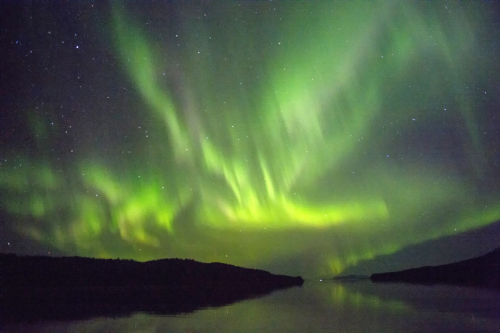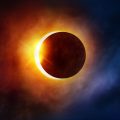
On the brink of a unique celestial event, the Space Weather Prediction Center at the National Oceanic and Atmospheric Administration has announced a severe geomagnetic storm watch—the first of its kind since 2005. This upcoming Friday, residents as far south as Alabama might witness the vibrant dance of the northern lights, a spectacle usually confined to higher latitudes.
This severe solar storm, a result of recent solar flares and coronal mass ejections, could produce dazzling auroral displays from Friday evening into the weekend. The phenomena are expected to be visible in areas uncustomarily far south, including parts of Northern California.
Shawn Dahl, a coordinator at the Space Weather Prediction Center in Boulder, Colorado, expressed both excitement and concern over the upcoming events. “It’s been nearly two decades since we’ve seen a storm of this magnitude,” he noted. The storms are powerful enough to disrupt satellite operations and power grids, prompting alerts to relevant operators to brace for potential impacts.
The timing of the storm’s arrival is still uncertain, with Dahl pointing out the challenges of predicting events originating 93 million miles away. Assistance from NASA’s Advanced Composition Explorer, stationed about 1 million miles from Earth, will aid in refining forecasts by monitoring solar winds.
The auroras are produced when expelled solar particles collide with gases in Earth’s upper atmosphere, igniting the sky with mesmerizing colors. Typically seen in polar regions, these lights might make a rare appearance further south due to the intensity of the current solar activity.
Auroras are best viewed away from city lights under clear skies, and the Space Weather Prediction Center provides an aurora dashboard for real-time visibility forecasts. Remarkably, with this event, even smartphones might capture the auroras in regions where they are usually invisible to the naked eye.
This weekend could also see additional solar eruptions, potentially extending the geomagnetic disturbances. Such storms have historical precedents of causing significant disruptions, such as the 1989 blackout in Montreal and satellite failures in 2002.
As the current solar cycle progresses towards its peak in mid-2025, both NOAA and NASA anticipate more such dramatic solar activities, highlighting the dynamic and powerful nature of our closest star.







